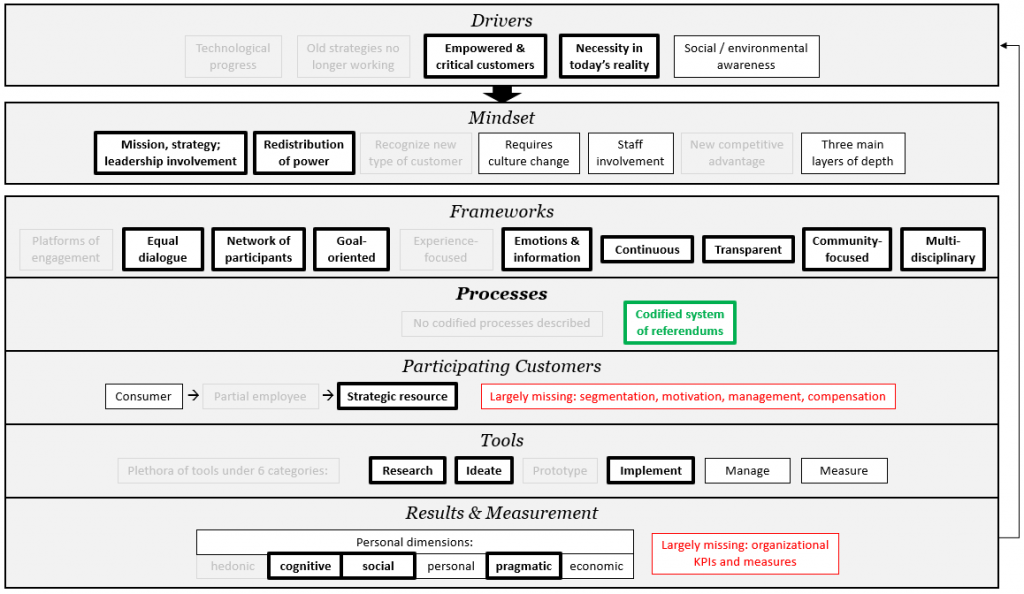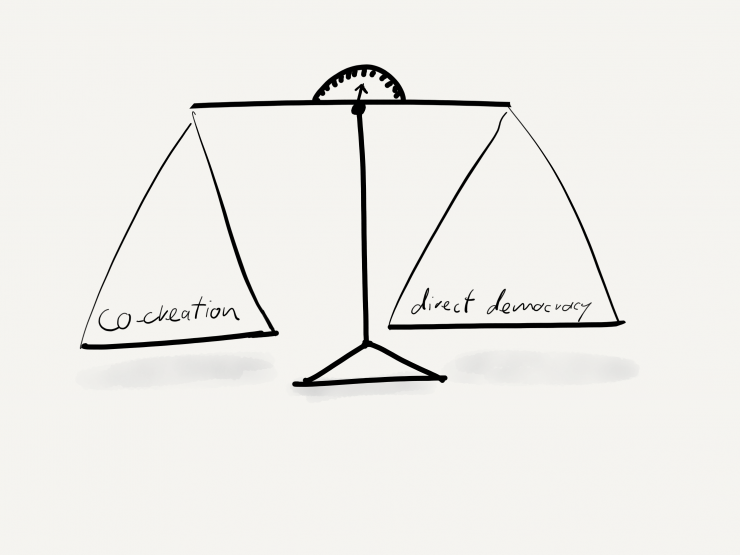The previous post looked at overlaps in Drivers and Mindset between the literature of “co-creation”, and the realities of Swiss direct democracy. This post is the conclusion of the comparison. Below is a summary visualization:

Frameworks. Almost everything in Frameworks of co-creation literature review is a close match with Swiss direct democracy. Citizens are the sovereign, so there is equal dialogue. There are inclusive negotiations, so network and multi-disciplinary view is a strong match. Referendums are always goal driven, are regularly held, so continuous stands true. Apart from government proceedings, most elements are fully transparent. The community is absolutely central (see in a later post). Citizens are well informed with plenty of information (I will also write more about this later), Emotions play some role but not more than in any other democracy. However, the two mismatches, are noteworthy. An experience-focused engagement platform is highlighted as crucial for co-creation in the general co-creation literature review. But these purpose-designed experiences are completely missing in Swiss direct democracy. And while physical assemblies (“Landesgemeinde”) used to play a central role, these are disappearing, and not being replaced by official digital platforms.
Processes. The End-to-End Process was largely missing in co-creation literature. But in Swiss direct democracy there is a well established process: the referendums. I will detail this in a later series of posts.
Customers. Citizens, are seen as a strategic resource, and this is what differentiates direct democracy from other forms of governance. Yet, just like in co-creation literature, segmentation, motivation, longer-term management and compensation of citizens by the state is missing. These are not even heavily debated topics, though in the light of relatively low participation, they should be.
Tools. In contrast to the plethora of tools that service design literature describes, SDD only uses referendums, debates, and consultations. Referendums can be categorized under ‘research’ and ‘ideation’, debates belong under ‘implementation’, and consultations can be categorized under ‘manage’ or ‘research’ phases of a co-creation tool categories.
Results and Measurement. Just as how KPIs are largely missing in co-creation literature, the effects of direct democracy have also not been directly measured by political experts. No organizational KPIs are established, apart from simple statistics – see a later post about “direct democracy in numbers”. Personal benefits of direct democracy have also not been researched – see in a later post.
The key take-away is not that direct democracy is better or worse than what is described in co-creation’s literature. Rather that every co-creation implementation will be different, and will use the main concepts to deferring levels.
The next post will look into an organizational analysis of direct democracy.




















